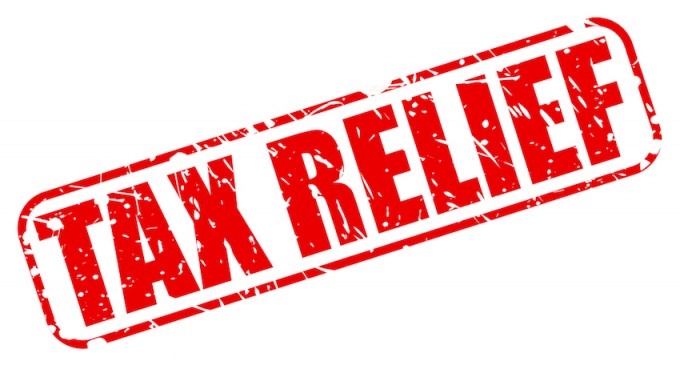|
|
Keep up-to-date with us and what's happening in the business world
- Small Business Cashflow Scheme
- Tax Loss Carry-Back Scheme
- Financial and tax legilsative changes
|
|
Small Business Cashflow Scheme
On Friday the Government announced details of its Small Business Cashflow (loan) Scheme to assist businesses impacted by COVID-19.
Loan funding under the scheme will be accessible via the Inland Revenue from 12 May 2020.
While details are still yet to be finalised, we have been advised of the following key requirements of the scheme:

- Eligibility criteria is the same as for the Government Wage Subsidy Scheme, in that the business:
- Must be based in New Zealand;
- Must have suffered or expected to suffer a 30% decline in revenue in any given month from January to June
2020 as a result of COVID-19 related impacts; and
- Must have shown that steps have been undertaken to mitigate the financial impact of COVID-19
- Completion of a declaration similar to the Wage Subsidy application, whereby that business owner believes they have a viable business, that the loan funds will be used for core business operating expense (rent, utilities, etc) and enter into a legally binding loan agreement with Inland Revenue;
- Loans will be available to business with less than 50 staff;
- Loans of $10,000 per business, plus $1,800 per Full Time Equivalent (FTE) employee (IE: up $28,000 accessible for business with 10 FTE staff);
- The loans will be interest free if the borrowed amount is repaid within 12 months of drawdown;
- The interest rate after the first 12 months will be 3% per annum;
- No loan repayments are required within the first 2 years; and
- The loan must be repaid within 5 years.
While the scheme does not represent free money for businesses, unlike the wage subsidy scheme, it does provide access to much needed cash at interest rates that are generally well below commercial lending rates. We suspect that proving a business viability will the key aspect, which will likely require the production of budgets and forecasts.
The above information represents the full extent of the details currently available at this stage. The Inland Revenue is expected to release further details of the application process and information requirements this week; for which we will provide further advice as soon as those details are made available.
|
|
Tax Loss Carry-Back Scheme

Further details of the tax loss carry-back scheme were released today (4 May 2020). Businesses can utilise the tax loss carry-back scheme were the business is expected to generate a loss in the 2021 income tax year (which can be carried-back against profits within the 2020 income tax year) or the business generated a loss in the 2020 income tax year, it can carry-back the loss against any profits generated in the 2019 income tax year.
The key details of the scheme are as follows:
- Projected losses for 2021 can be included within the 2020 income tax return, if not filed;
- Actual losses for 2020 or for 2021 where the 2020 income tax return can be filed, need to request a reassessment via MyIR or in writing;
- Increased flexibility around provisional tax re-estimates;
- No ability to carry-back rental losses or offset those losses against other income;
- Companies must maintain shareholder continuity (49% shareholder continuity); and
- Confirmation that use of money interest will apply if losses are over-estimated, hence need to be conservative when projecting losses for 2021.
Based on the knowledge of our clients base, we believe there will be limited application, as while a number of our clients profits for 2021 will be done, we are still expecting the majority of our clients to generate profits pre shareholder salaries being paid,
This is a very complex piece of legislation, so if you have any questions around whether the scheme could benefit your business, please contact us to discuss further.
|
|
Summary of all Financial and Tax Measures to Date
We have seen so many changes over the last six weeks, so will look to retain a summary of those at the bottom of our future newsletters. The key financial impacts from legislative and tax changes to date are:
- Wage Subsidy Scheme ($585.80 or $350.00 per week for employee wages for 12 weeks);
- Depreciation reintroduced on commercial and industrial buildings from 1 April 2020 (2% diminishing value per annum);
- Increased provisional tax threshold (from $2,500 to $5,000);
- Expenditure threshold for low value assets increased to $5,000 from 17 March 2020 for 12 months, then $1,000 post 17 March 2021;
- Research & Development tax credits brought forward (ability to claim credits for 2019-20 tax year against other tax types);
- Use of money interest and penalty remission around late tax payments, if business impacted by COVID-19;
- Removal of working hours requirement for In Work Tax Credit for Working for Families;
- Winter energy payment increase for eligible recipients ($450 to $900);
- Loss carry back scheme (ability to offset expected losses from 2021 back to 2020 or losses from 2020 back to 2019, to generate tax refunds or lower tax payments); and
- Small business cashflow scheme (Up to $100,000 interest free for 12 months, loans for up to 5 years).


